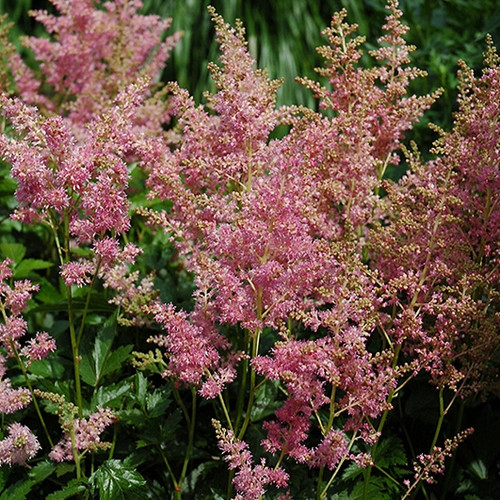| Callicarpa dichotoma 'Early Amethyst' | USDA Zone: 5-8 |
Early Amethyst Beautyberry is primarily grown for its highly ornamental fruit. It features an abundance of magnificent lavender berries from late summer to late fall. It has lavender trumpet-shaped flowers along the branches from early to mid summer, which are interesting on close inspection. It has green deciduous foliage. The narrow leaves do not develop any appreciable fall colour.
Popular for its beautiful amethyst-purple flowers and berries; graceful, arching branches; shrub is less leggy in full-sun and with low nitrogen fertilizer; may die back like a perennial in colder climates.
Early Amethyst Beautyberry is recommended for the following landscape applications;
- Mass Planting
- General Garden Use
- Container Planting
Bloom Time: Summer
Fall Color
Ornamental Berries
Bird Friendly
Common Name: Beautyberry
|
Key Feature
|
Light Needs | Landscape Uses |
 |
 |
|
|
|
|
| More About Early Amethyst Beautyberry |
| Height: 4 ft |
Spread: 4 ft |
Flower Colour: Purple / Pink Shades |
|
Early Amethyst Beautyberry does best in full sun to partial shade. It prefers to grow in average to moist conditions, and shouldn't be allowed to dry out. It is not particular as to soil type or pH. It is highly tolerant of urban pollution and will even thrive in inner city environments. Early Amethyst Beautyberry makes a fine choice for the outdoor landscape, but it is also well-suited for use in outdoor pots and containers. Because of its height, it is often used as a 'thriller' in the 'spiller-thriller-filler' container combination; plant it near the center of the pot, surrounded by smaller plants and those that spill over the edges. It is even sizeable enough that it can be grown alone in a suitable container. Note that when grown in a container, it may not perform exactly as indicated on the tag - this is to be expected. Also note that when growing plants in outdoor containers and baskets, they may require more frequent waterings than they would in the yard or garden. Be aware that in our climate, most plants cannot be expected to survive the winter if left in containers outdoors, and this plant is no exception. NOTE: Some flowers and plants may be harmful or poisonous to people or pets if touched or ingested. If you require more information before placing an order, please let us know in advance. |










